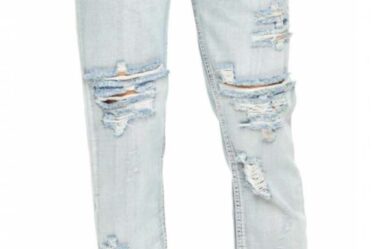
LONDON, United Kingdom — Gucci is one of the strongest brands in the world. In unprompted brand recognition surveys, where consumers are asked which luxury brands they’d like to buy, Gucci consistently scores in the top three.
But in recent years, the brand risked losing its fashion currency, just as competition in the luxury market was getting sharper. The missing factor was fresh creative content. Former creative director Frida Giannini emphasised Gucci’s heritage and largely stuck to the sensual aesthetic of the Tom Ford era. And, although she proved to be a master at reviving former Gucci icons — bringing back the house’s floral print as a 2005 bag collection, while successfully updating the iconic Jackie bag in 2008 — she created little in the way of future icons.
Of course, bringing new ideas to market is essential to mega-brands if they are to stay relevant to consumers. And with weakened status as a fashion authority, Gucci’s sales began to slump. By the first quarter of 2015, the brand had suffered four consecutive quarters of declining sales.
Still, the health of Gucci’s brand is not off by all that much and can be revived quickly. In fact, it’s being jump-started as I write: creative director Alessandro Michele, installed by chief executive officer Marco Bizzari to succeed Giannini, is winning critical acclaim and wholesale orders with his new creations, a very encouraging ‘soft’ sign of progress. In the second quarter of 2015, sales rose 4.6 percent, beating expectations and marking a sooner-than-expected rebound for the brand, albeit supported by end-of-season sales — especially in China.
But at Gucci aims to drive forward its recovery, the brand should look closely at its entry-level handbag offering, which seems to have lost its ‘oomph’ factor. Introducing glamorous, high-quality, compelling product at entry-level price points of around €600 (about $668) should not be an impossible task. The label should also look to its logo. In the past few years, Gucci has seemed to view its logos as a stigma and confined them to products with lower price points. This is a wasted opportunity, as the recent success of Louis Vuitton’s logo-heavy luxury products show. Take note Gucci: consumers at all levels want their branded goods to be recognisable.
So where does this leave Gucci today? Gucci’s third quarter results, released today, show modest growth that’s not much to write home about. Yet, a slight beat to muted expectations is good news in comparison to the misses many of the brand’s peers revealed last week. Retail progression at Gucci (up 1 percent) is encouraging. Looking ahead to next year, the ‘Michele cure’ should start to take effect and translate into improved organic growth and financial performance as early as next spring.
Gucci’s sales recovery will be faster than the recovery of its profitability, however. Fixing Gucci will cost: disparities in pricing across regions must be reduced, the brand’s retail network in China must be upgraded and spending on communications to support Michele’s new creative vision must be increased.
But if Gucci works, its parent company Kering works too — provided that the growth of Bottega Veneta (another critical asset which contributed nearly one quarter of Kering’s operating profit in 2014) does not slow down too much.
Luca Solca is the head of luxury goods at Exane BNP Paribas.



